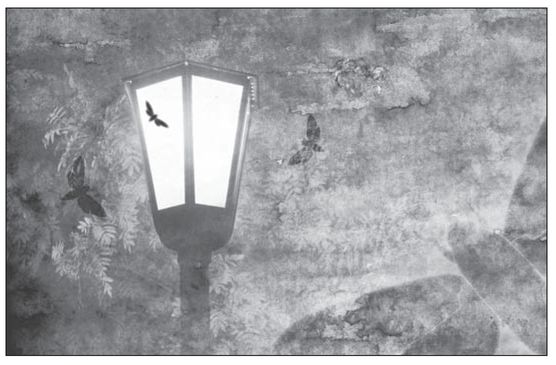Table of Contents
To Erin and her patience
WHY IS THE SKY BLUE?
One of the most commonly seen sights is the blue sky, yet whats not widely known is what makes it blue.
The sun emits light that travels through space toward Earth. Because space is a vacuum (i.e., it has no atmosphere), the light remains largely undisturbed until it nears the Earth, whose atmosphere is made up of a mixture of gas molecules (mainly oxygen and nitrogen) and other materials. The closer you get to the Earth, the thicker the atmosphere.
Light from the sun appears white but is in fact a combination of colors, and the range of these colors that are visible to the human eyefrom red to violet, by way of orange, yellow, green, blue and indigois shown when light is passed through a prism. These different colors have different wavelengths and energies, with violet having the shortest wavelength and highest energy and red having the longest wavelength and lowest energy.
As light hits the Earths atmosphere, the different colors react in different ways. Some of them get absorbed by the gas molecules while others do not. Most of the longer-wavelength colors (such as red and orange) pass straight through the atmosphere and are unaffected, while many of the shorter-wavelength colors (such as violet and blue) get absorbed by the gas molecules, because the wavelengths (i.e., the distance between the peaks of each wave) of these colors are similar in size to the diameter of an atom of oxygen. The gas molecules then radiate these colors and scatter them across the sky, causing the sky to appear blue.
The reason why we perceive the sky as blue and not violet is because our eyes are more sensitive to blue.
WHY ARE MOTHS ATTRACTED TO LIGHTS?
Its commonly known that moths are attracted to bright light bulbs and often circle them, giving rise to the saying like moths to a flame. There are a number of theories as to why moths engage in this often life-threatening practice.
The traditional hypothesis is that moths mistake the light source for the moon. Moths are thought to migrate long distances, and it is believed that they use the moon to navigate on their journeys, it being a relatively stationary reference point from which to gauge direction. They can travel in straight lines by maintaining a constant angle to the moon. When the moth mistakes an artificial light source for the moon, it continues to keep a constant angle to the light.
However, because of its close proximity to the light, this results in it spiraling toward it in a confused state.
While its accepted that moths do indeed use the moon to navigate, the problem with the idea that moths mistake lights for the moon is that they tend to fly directly to a light and then spiral around it, rather than spiraling toward it as soon as they spot it.
A second theory is that moths fly toward lights in an attempt to keep warm. However, this is discredited because it turns out that moths are more attracted to ultraviolet light bulbs than those emitting normal visible light, which are warmer. In fact, moths are more sensitive to certain wavelengths of lightfor example, they are more attracted to the colors in white light than to yellow.
A third theoryand the most compellingis that moths are initially attracted to a light source and will fly directly toward it, but then, once there, will try to avoid the light and seek darkness (perhaps because theyre nocturnal creatures). As a result of a peculiarity in the moths vision, they perceive that the darkest place in the sky is an area about one foot from the light source. As a safety mechanism, the moth seeks out this darkest place and remains there, causing it to circle the light frantically within the dark band.
CAN THE GREAT WALL OF CHINA BE SEEN FROM SPACE?
Its commonly said that the Great Wall of China is the only manmade structure that can be seen with the naked eye from space or the moon. This proposition has been perpetuated in many sources: its a question in the board game Trivial Pursuit, it has been contained in schoolbooks across the world and it was stated as being the case by Ed Harris in the 1998 movie The Truman Show. In addition, Richard Halliburtons Second Book of Marvels makes such a claim, despite the fact that this book was first published in 1938, before man launched any satellites!
One school of thought is that the claim was made to convey the enormous scale of the Wall and the vastness of mans achievement in building it. It is now accepted that the proposition is false.
Many large-scale manmade objects, such as highways, airports, buildings and ships, can be seen with the naked eye, as can the Great Wall itself, but only from low Earth orbit (up to about 200 miles above sea level). The Walls width ranges from about five to ten meters but, when dust storms hit it, it becomes more visible at this close range. However, no manmade structures at all are visible with the naked eye above an altitude of a few thousand miles, and certainly not from the moon, which is about 240,000 miles away and from which entire continents and oceans are barely visible without mechanical assistance. These facts have been confirmed by a number of astronauts who have left the question beyond any doubt.
WHY WERE NECKTIES INVENTED?
It is often questioned why such a seemingly useless item of apparel as the necktie was ever invented. Its thought by some anthropologists that it might have been the first item of clothing ever worn, taking the form of a strip of fur around the necks of our ancestors. However, the earliest evidence of the wearing of neckties was by the Chinese. Chinas first emperor, Shih Huang Ti, was afraid of death and commanded that replicas of his army personnel be laid to rest with him for protection. He died in 210 BC, and when his tomb was rediscovered in 1974, the intricately detailed terracotta replicas preserved therein each wore neck cloths or ties.
Neckties were also present in Roman times. In AD 113, after one of his victories, the emperor Trajan erected a marble column bearing reliefs that feature thousands of soldiers, many of whom are wearing neckties. Its thought by some that these soldiers wore neckties to guard against cold weather or to absorb sweat.






















